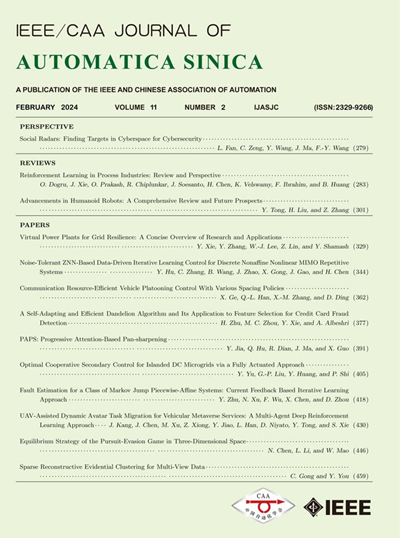Human Observation-Inspired Universal Image Acquisition Paradigm Integrating Multi-Objective Motion Planning and Control for Robotics
IF 15.3
1区 计算机科学
Q1 AUTOMATION & CONTROL SYSTEMS
引用次数: 0
Abstract
Image acquisition stands as a prerequisite for scrutinizing surfaces inspection in industrial high-end manufacturing. Current imaging systems often exhibit inflexibility, being confined to specific objects and encountering difficulties with diverse industrial structures lacking standardized computer-aided design (CAD) models or in instances of deformation. Inspired by the multidimensional observation of humans, our study introduces a universal image acquisition paradigm tailored for robotics, seamlessly integrating multi-objective optimization trajectory planning and control scheme to harness measured point clouds for versatile, efficient, and highly accurate image acquisition across diverse structures and scenarios. Specifically, we introduce an energy-based adaptive trajectory optimization (EBATO) method that combines deformation and deviation with dual-threshold optimization and adaptive weight adjustment to improve the smoothness and accuracy of imaging trajectory and posture. Additionally, a multi-optimization control scheme based on a meta-heuristic beetle antennal olfactory recurrent neural network (BAORNN) is proposed to track the imaging trajectory while addressing posture, obstacle avoidance, and physical constraints in industrial scenarios. Simulations, real-world experiments, and comparisons demonstrate the effectiveness and practicality of the proposed paradigm.受人类观察启发的通用图像采集范式,将多目标运动规划和控制集成到机器人技术中
图像采集是在高端工业制造中进行表面检测的先决条件。目前的成像系统往往缺乏灵活性,局限于特定对象,在处理缺乏标准化计算机辅助设计(CAD)模型的各种工业结构或变形情况时遇到困难。受人类多维观察的启发,我们的研究引入了一种专为机器人技术量身定制的通用图像采集范例,无缝集成了多目标优化轨迹规划和控制方案,以利用测量点云在各种结构和场景中进行多功能、高效和高精度的图像采集。具体来说,我们引入了一种基于能量的自适应轨迹优化(EBATO)方法,该方法将变形和偏差与双阈值优化和自适应权重调整相结合,以提高成像轨迹和姿态的平滑度和准确性。此外,还提出了一种基于元启发式甲虫触角嗅觉递归神经网络(BAORNN)的多重优化控制方案,以跟踪成像轨迹,同时解决工业场景中的姿态、避障和物理约束问题。模拟、真实世界实验和比较证明了所提范例的有效性和实用性。
本文章由计算机程序翻译,如有差异,请以英文原文为准。
求助全文
约1分钟内获得全文
求助全文
来源期刊

Ieee-Caa Journal of Automatica Sinica
Engineering-Control and Systems Engineering
CiteScore
23.50
自引率
11.00%
发文量
880
期刊介绍:
The IEEE/CAA Journal of Automatica Sinica is a reputable journal that publishes high-quality papers in English on original theoretical/experimental research and development in the field of automation. The journal covers a wide range of topics including automatic control, artificial intelligence and intelligent control, systems theory and engineering, pattern recognition and intelligent systems, automation engineering and applications, information processing and information systems, network-based automation, robotics, sensing and measurement, and navigation, guidance, and control.
Additionally, the journal is abstracted/indexed in several prominent databases including SCIE (Science Citation Index Expanded), EI (Engineering Index), Inspec, Scopus, SCImago, DBLP, CNKI (China National Knowledge Infrastructure), CSCD (Chinese Science Citation Database), and IEEE Xplore.
 求助内容:
求助内容: 应助结果提醒方式:
应助结果提醒方式:


